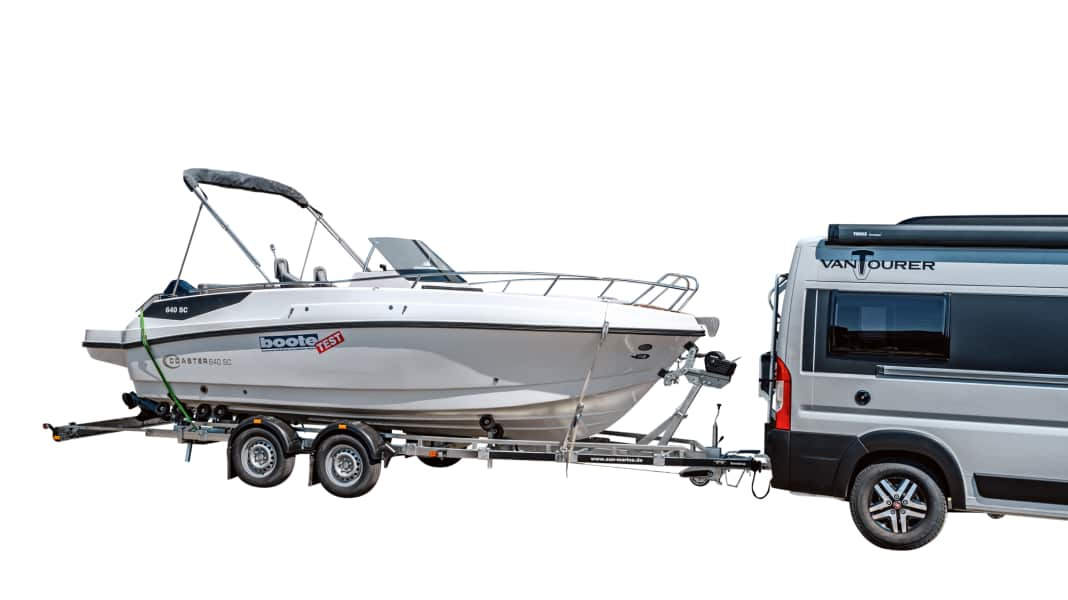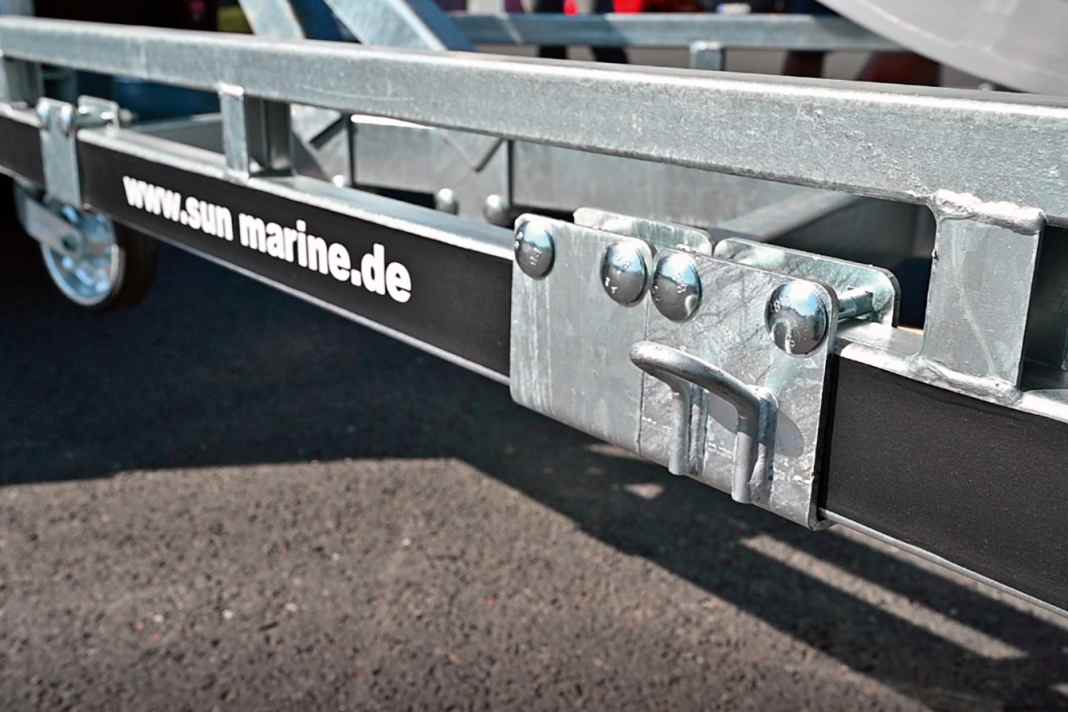
If you get the boat out of winter storage and want to set off, you must of course check the trailer beforehand. You can find out what is important in our "Checklist for the trailer".
However, in order to transport the boat safely on the road, not only the trailer itself must be in order, but also the accessories and the lashing of the boat.
We show in a series of pictures which points are particularly important. Our photo model is a 2500 kg trailer from Brenderup. The matching boat - a Coaster 640 SC - had already been placed on the trailer by David Wanzke, owner of Sun Marine Wassersport in Bergkamen. As you might expect, David Wanzke is also a Brenderup dealer. The lashing fittings on the trailer were also prepared. They are screwable and can therefore be cleverly positioned on the trailer tube frame so that the tension points are as favourable as possible to the attachment points on the boat.
It is important that acceleration forces are absorbed and that the boat is pressed firmly onto the trailer
With some trailer manufacturers, the lashing points are welded directly to the trailer frame. If there are no such eyelets, the straps must be attached directly to the trailer frame. Care must be taken to ensure that the hook is really secure and that the straps do not run over sharp edges. There are usually two lashing points at the front of the trailer frame, with the straps running diagonally from the bottom to the top. They absorb the braking forces and hold the boat firmly in the keel rollers. At the rear of the trailer, you also need two points on the chassis with straps running diagonally aft towards the boat. They absorb the acceleration forces and press the boat firmly into the supports at the rear.
In addition, the winch strap in the bow holds the boat firmly in the V-profile (two in this case). Eyelets, cleats and solid handrails are used to moor the boat. David Wanzke has secured his boat-trailer combination in the bow with the winch hook in the bow eye and with a chain (between the bow eye and winch bracket). Two straps are attached to the bow cleats, and a strap runs completely over the boat (threaded under the handrails) from eyelet to eyelet.
It is also important that the edges of the boat - over which the straps run - are protected against rubbing so that gelcoat or rubbing straps are not damaged. We have used foam boards for this, but a piece of carpet will also do. We also recommend securing the light strip with straps to prevent it from wobbling out.
Regarding the straps: They must have a test mark, must not be damaged and must be sufficiently dimensioned. The straps on our test object had a tensile force of 1000 daN. It is best to buy the appropriate straps from the dealer when you take delivery.
Accessories for the trailer to click through:






